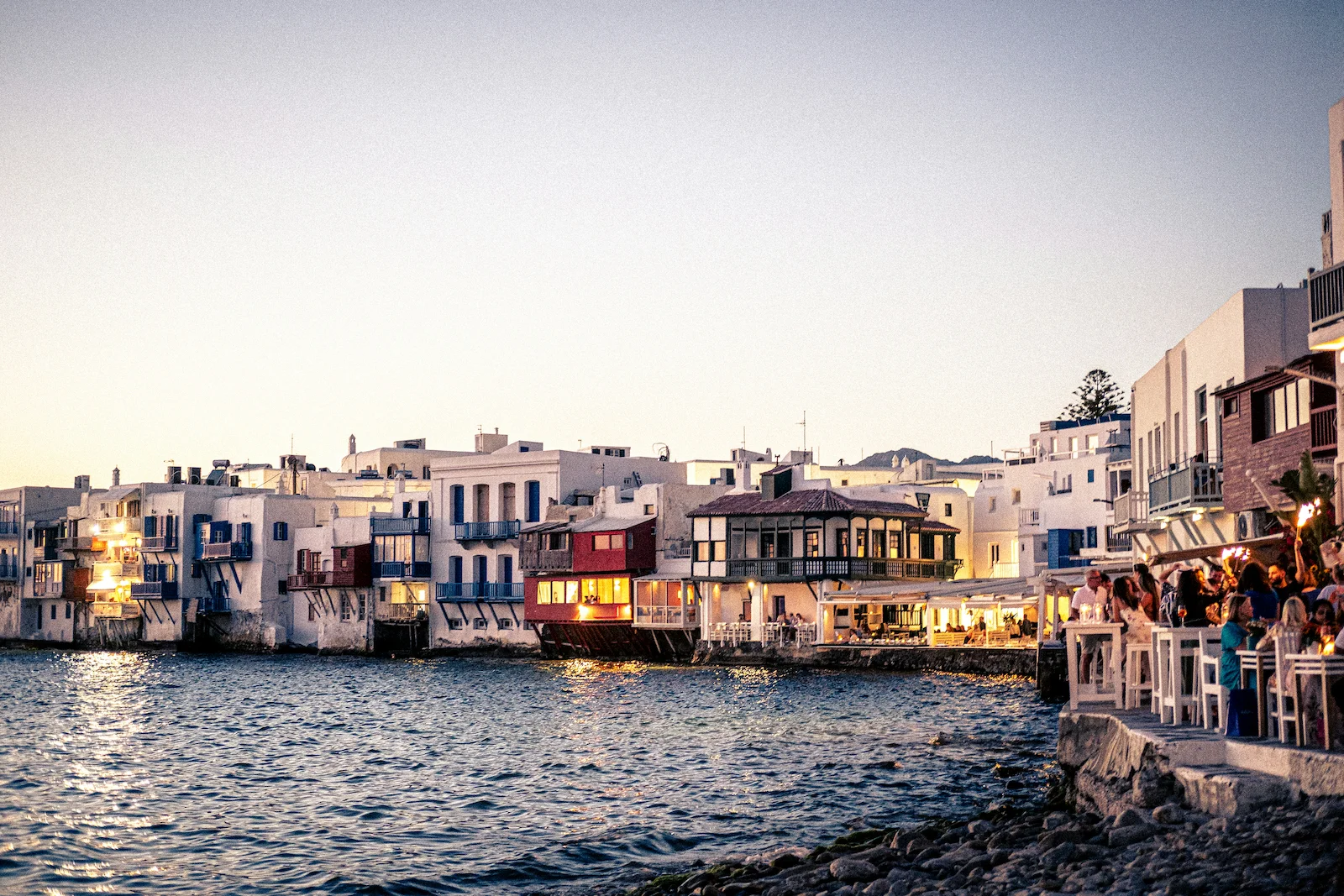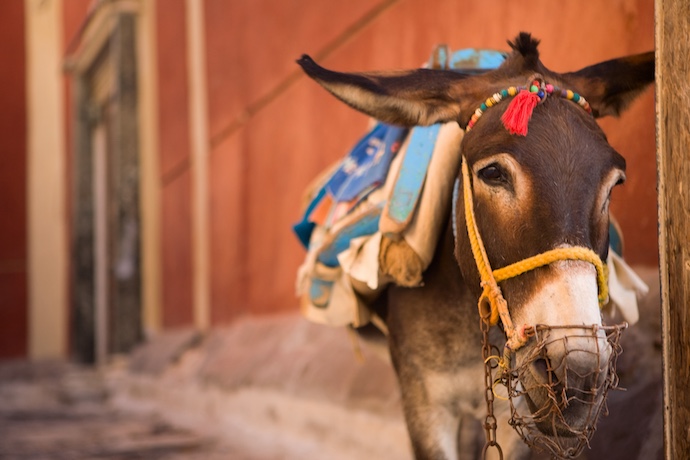
Culture
Women on the Island of Winds: Mykonos
Since childhood, I dreamed of visiting Greece. In August, that dream became a reality when I spent a week exploring Athens, Mykonos, and Santorini through a tour company based out of New England. Our group of 25—singles and couples from states like New Jersey, Minnesota, California, and Virginia—began our journey in Athens. The ancient city, with its majestic Acropolis, lush hills, and statues like the Runner, was captivating. Yet, it was Mykonos, known as the Island of Winds, that left the deepest impression on me, particularly the women who call it home.
Before arriving in Mykonos, I’d seen pictures and read descriptions, but nothing compared to the island’s actual beauty. Situated in the Aegean Sea, Mykonos is renowned for its lively nightlife, striking whitewashed buildings with blue accents, and, of course, its powerful winds. Though its permanent population hovers around 12,000 to 15,000, that number swells dramatically during the tourist season, when visitors from around the world flock to its pristine beaches and iconic landmarks like the windmills and the Church of Panagia Paraportiani.
 Mykonos’s narrow streets and vibrant squares are alive with history, but modernity poses challenges, particularly in navigating the island. Without traffic lights, the roads, especially in older areas and villages, were designed long before cars and motorbikes and can be difficult to traverse, particularly during peak season. I learned from Ioanna, our tour guide, that for many years, donkeys were the island’s main mode of transport. Statues of these faithful animals dot the landscape, a reminder of their vital role in the island’s history.
Mykonos’s narrow streets and vibrant squares are alive with history, but modernity poses challenges, particularly in navigating the island. Without traffic lights, the roads, especially in older areas and villages, were designed long before cars and motorbikes and can be difficult to traverse, particularly during peak season. I learned from Ioanna, our tour guide, that for many years, donkeys were the island’s main mode of transport. Statues of these faithful animals dot the landscape, a reminder of their vital role in the island’s history.
Traffic congestion is common in Mykonos, where tourists rent cars, scooters, and ATVs, adding to the chaos. Fortunately, the public bus system offers a more relaxed way to explore the island. With help from Ioanna, I quickly mastered the bus routes and ticketing process, which allowed me to venture beyond our base at the family-owned Aeolos Resort. Set atop a mountain, the resort offered stunning views, though crossing the street nearby was a perilous affair given the lack of traffic lights.
The island’s dining scene was a revelation and served as the inspiration for my focus on the women of Mykonos. Over two days, I observed the women—both locals and internationals—and learned much from speaking with shop owners, restaurant staff, and Ioanna herself. Mykonos’s economy revolves around tourism, with many women working in hospitality. Some local Greek women also maintain traditional roles, managing household duties and small-scale agricultural work, while others sell homemade goods or crafts, contributing to the local economy.
Women on Mykonos, much like those in other tourist hotspots, represent a mix of traditional and modern roles. I encountered Armenian and Italian women running small shops, but a different, more visible trend caught my attention: beautiful, slender young women, many dressed provocatively, stationed outside restaurants to lure in customers, particularly men. These women, who resembled goddesses with their striking looks, were integral to the island’s tourist industry. Their presence, however, raised questions about objectification.
 At Aeolos Resort, I spoke with three young hotel staff members—Xristina, Stavroula, and Alexandros—about the practice of using attractive women to draw in business. Xristina, a sharp and confident woman in her twenties, dismissed concerns, saying, “If they’re okay with it, why should we worry?” She added that these women earned good money. However, Xristina was quick to point out that the more serious issue facing women on the island was domestic violence. “If reported, abusers are punished severely,” she said, but Ioanna, our guide, emphasized that many cases go unreported due to a lack of resources and options for victims.
At Aeolos Resort, I spoke with three young hotel staff members—Xristina, Stavroula, and Alexandros—about the practice of using attractive women to draw in business. Xristina, a sharp and confident woman in her twenties, dismissed concerns, saying, “If they’re okay with it, why should we worry?” She added that these women earned good money. However, Xristina was quick to point out that the more serious issue facing women on the island was domestic violence. “If reported, abusers are punished severely,” she said, but Ioanna, our guide, emphasized that many cases go unreported due to a lack of resources and options for victims.
Alexandros, a handsome young man, echoed Xristina’s sentiments, noting that attractive men are also hired to stand outside restaurants. “In six hours, they make what others earn in a week,” he explained, downplaying concerns about exploitation. Still, Ioanna and Xristina both highlighted domestic violence as a more pressing issue, with Ioanna stressing the need for victims to come forward and access the support available to them.
During our downtime, Ioanna shared more insights into Greek society, particularly the social issues affecting women. As an advocate for gender equality, Ioanna expressed concern over the choices young people in Greece make, including becoming sexually active as early as 14. She worried that these early choices could derail education and career prospects, though she praised the country’s free college education system, which allowed her to graduate debt-free. Still, many teenagers forgo higher education, opting instead to work in tourism or hospitality, leveraging their charm and good looks to earn a living.
While some women find success in these industries, others—especially those in their late twenties and thirties—occupy more skilled positions, working as professors, in government, or in business management roles. Yet, the issue of objectification remains, especially for younger women and girls working in tourism. Tackling this requires community efforts to challenge stereotypes, promote fair labor practices, and ensure that all workers are valued for their skills rather than their appearance.
As Mykonos continues to grow as a global tourist destination, the role of women—both local and international—will remain central to the island’s culture and economy. The challenge lies in ensuring that women are treated with dignity and respect, whether they’re standing outside a restaurant or leading a tour group, and in addressing the deeper social issues that persist beneath the island’s picturesque surface.
